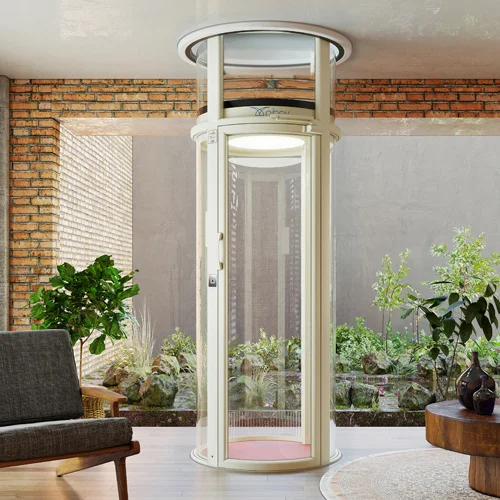More homeowners today are exploring the idea of adding a home elevator—not as a luxury, but as a practical upgrade for safety, convenience, and long-term living. As families grow, as loved ones age, or as mobility needs change, navigating between floors can become a challenge. At the same time, modern architectural trends emphasize comfort and accessibility, making house elevators more mainstream than ever.
But one important question remains: Is it possible to install an elevator in a home that wasn’t originally built for one?
Thanks to innovations in residential lift technology, the answer is a confident yes. Even older homes or compact properties can accommodate a high-quality elevator with the right design and professional evaluation. Retrofitting an elevator doesn’t require a complete remodel—and often demands less construction than homeowners expect.
This expanded guide provides expert-level insights into feasibility, technology options, design considerations, long-term benefits, and the true house elevator cost, which typically ranges from $50,600 to $103,600 depending on multiple factors.
Can Any Existing Home Support a New Elevator?
Although nearly any home can accommodate an elevator, there are still important elements that determine whether the installation will be smooth, cost-effective, and structurally safe.
Home Layout Flexibility
Every home is unique. Multi-level layouts, hallways, staircases, and open spaces all influence how easily an elevator can be incorporated. Even tight spaces often allow compact, shaft-less elevators.
Structural Stability
Most modern homes can support a retrofit elevator. For older homes, a structural engineer may suggest minor reinforcement, particularly if heavy traditional elevators were being considered. The good news is that newer models are significantly lighter and more adaptable.
Electrical Capacity
A home elevator requires a dedicated electrical line. In many cases, only a simple upgrade is needed, especially for energy-efficient pneumatic lifts that draw minimal power.
Permits and Local Codes
Depending on your location, building permits and inspections may be required to confirm safety compliance. Professional elevator companies handle this process, making it simple for homeowners.
Detailed Breakdown: What Influences House Elevator Costs?
The house elevator cost usually falls between $50,600 and $103,600, but understanding these cost drivers helps you anticipate your specific investment:
Elevator Type
Different technologies vary in price. Pneumatic lifts cost less due to minimal construction. Hydraulic and traction systems can require more extensive prep work.
Number of Floors
Each additional floor affects materials, engineering, and installation time.
Civil Modifications
Some homes need simple structural openings, while others may require more significant adjustments, depending on the chosen elevator.
Cabin Design and Finishes
Glass panels, premium flooring, LED lighting, and custom colors add to the aesthetic and cost.
Brand and Build Quality
Well-established brands often provide better safety compliance, longer warranties, and stronger after-sales support.
Advanced Elevator Options for Existing Homes
In retrofit situations, the goal is to minimize disruption while maximizing performance. The following technologies are best suited for older or already built homes:
Pneumatic Elevators (Vacuum Lifts)
An engineering marvel, these elevators use air pressure to move. They’re self-contained and aesthetically modern.
Extended Benefits:
-
They take up minimal floor space.
-
Their transparent construction provides open visibility, reducing the enclosed feeling.
-
They operate on single-phase power and consume energy only during ascent.
Machine-Room-Less Screw Drive Elevators
These elevators do not require additional space for machinery, making them ideal for tight retrofits.
Extended Benefits:
-
They offer smooth and stable operation.
-
Maintenance needs are lower compared to hydraulic lifts.
-
They allow flexible placement options in the home.
Compact Hydraulic Elevators
Though requiring more preparation, modern compact hydraulic models are much more retrofit-friendly than their older counterparts.
Extended Benefits:
-
They support heavier loads, useful for wheelchairs or medical equipment.
-
They perform well in multi-level homes due to strong lift power.
Ideal Locations for Installing an Elevator in an Existing Home
Choosing the right location can reduce costs and simplify installation.
Converted Closet Spaces
Homeowners often choose to convert stacked closets into a lift shaft, creating a private and seamless integration.
Staircase Center Void
A popular choice because it uses vertical space that’s often underutilized.
Open Living Areas
Some homeowners intentionally place a modern elevator as a design feature, turning functionality into an interior accent.
Exterior Addition
In cases where interior space is extremely limited, an outdoor shaft attached to the home may be the best option. The elevator connects directly into each floor through wall openings.
Timeframe for Installing an Elevator in an Existing House
Retrofit schedules can vary, but typical timelines include:
-
Initial Consultation: 1–2 days
-
Design & Engineering: 2–3 weeks
-
Manufacturing: 4–10 weeks
-
Installation: 2–5 days
-
Final Inspection: 1 day
This means even a full retrofit can be completed within a few months from start to finish.
Long-Term Benefits of Adding a Home Elevator
Accessibility
If someone in your home has mobility challenges, an elevator can greatly improve day-to-day independence.
Safety
Staircases are a leading cause of household injuries. Elevators significantly reduce this risk.
Future-Proofing
A home elevator supports aging-in-place—a growing priority for families planning long-term residency.
Luxury and Modernization
Installing a house elevator elevates your home’s reputation and living standards without the need for large-scale renovations.
Maintenance Expectations
Modern house elevators require simple annual check-ups to ensure safe operation. Pneumatic elevators need minimal servicing compared to hydraulic systems, which require periodic oil checks.
When evaluating options, consider service availability, warranty terms, and the manufacturer’s support reputation.
Why Nibav Home Lifts Are a Popular Choice for Existing Homes
Nibav Home Lifts are particularly well-suited for retrofits because:
-
They require no pit, machine room, or shaft.
-
They operate using pneumatic technology, reducing energy use.
-
Installation is fast and minimally invasive.
-
They offer stylish, panoramic cabins that suit modern interiors.
-
Safety certifications meet global standards.
For homes where space, aesthetics, and convenience matter, Nibav is often a top choice.



